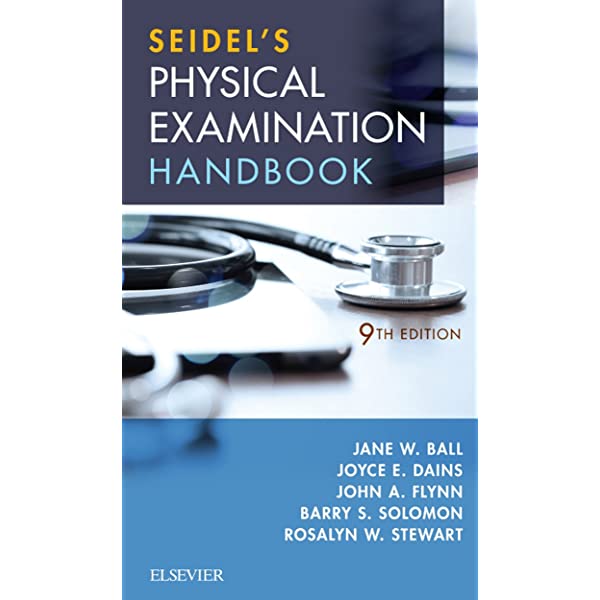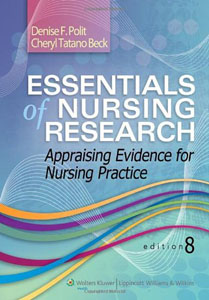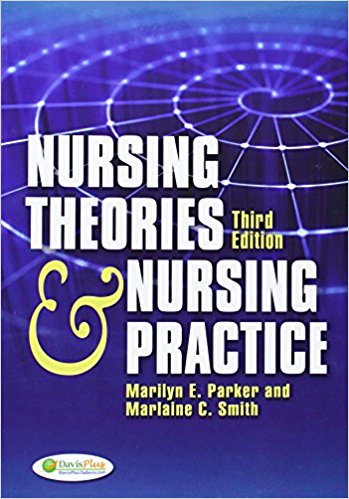Seidel’s Guide to Physical Examination 9th Edition by Ball Test Bank
Original price was: $50.00.$20.00Current price is: $20.00.
Seidel’s Guide to Physical Examination 9th Edition by Ball Test Bank is a great resource for students who are preparing for their physical examination. The guide provides a comprehensive overview of the examination process, including how to properly examine patients, identify signs and symptoms, and document findings. In addition, the guide includes a wide range of practice questions that will help students prepare for the examination. The Seidel’s Guide to Physical Examination 9th Edition by Ball Test Bank is an essential resource for any student who is preparing for their physical examination.
Description
Seidel’s Guide to Physical Examination 9th Edition Ball Test Bank
1. The History and Interviewing Process 2. Cultural Competency 3. Examination Techniques and Equipment 4. Clinical Reasoning 5. Documentation 6. Vital Signs and Pain Assessment 7. Mental Status 8. Growth, Measurement, and Nutrition 9. Skin, Hair, and Nails 10. Lymphatic System 11. Head and Neck 12. Eyes 13. Ears, Nose, and Throat 14. Chest and Lungs 15. Heart 16. Blood Vessels 17. Breasts and Axillae 18. Abdomen 19. Female Genitalia 20. Male Genitalia 21. Anus, Rectum, and Prostate 22. Musculoskeletal System 23. Neurologic System 24. Sports Participation Evaluation 25. Putting It All Together 26. Emergency or Life-Threatening Situations
Chapter 02: Cultural Competency
Ball: Seidel’s Guide to Physical Examination, the 9th Edition
MULTIPLE CHOICE
1. Which statement is true regarding the relationship of physical characteristics and culture?
a.
Physical characteristics should be used to identify members of cultural groups.
b.
There is a difference between distinguishing cultural characteristics and distinguishing physical characteristics.
c.
To be a member of a specific culture, an individual must have certain identifiable physical characteristics.
d.
Gender and race are the two essential physical characteristics used to identify cultural groups.
e.
Whereas all cultural traits can be viewed as static, physical traits are dynamic.
ANS: B
Physical characteristics do not symbolize cultural groups; there is a difference between the two, and they are considered separately. Cultures are dynamic in their evolution.
TOP: Discipline: Behavioral Science MSC: Organ System: General
2. A fixed image of any group that rejects its potential for originality or individuality is known as a(n):
a.
acculturation.
b.
norm.
c.
stereotype.
d.
ethnos.
e.
custom.
ANS: C
This definition describes a stereotype. A norm, on the other hand, is a standard of allowable behavior within a group, ethnos implies the same race or nationality, and acculturation is a process of adopting another culture’s behaviors. A custom refers to a habitual activity of a group in a given situation.
TOP: Discipline: Behavioral Science MSC: Organ System: General
3. Your new patient is a 40-year-old Middle Eastern man with a complaint of new abdominal pain. You are concerned about violating a cultural prohibition when you prepare to do his rectal examination. The best tactic would be to:
a.
do the examination because it is a necessary part of the physical examination.
b.
ask a colleague from the same geographic area if this examination is acceptable.
c.
inform the patient of the reason for the examination and ask if it is acceptable to him.
d.
refer the patient to a provider more knowledgeable about cultural differences.
e.
forego the examination for fear of violating cultural norms.
ANS: C
Asking, if you are not sure, is far better than making a damaging mistake. You would not be doing your job as a professional if you deferred the examination without a reason. It is not necessary to refer a skill you are capable of performing.
TOP: Discipline: Behavioral Science MSC: Organ System: General
4. Which statement is true regarding impoverished people?
a.
In the United States, socioeconomic status does not influence the delivery of health care.
b.
The morbidity and mortality rates of impoverished people are greater than those of the middle class.
c.
The morbidity and mortality rates of impoverished people are less than those of the middle class.
d.
No reliable statistics exist regarding the relationship of poverty to morbidity and mortality.
e.
The morbidity and mortality rates of impoverished people are similar to those of the middle class.
ANS: B
Poorly educated people and people in poverty die at higher rates than those who are advantaged; the same is true for morbidity.TOP: Discipline: Behavioral Science MSC: Organ System: General
5. In terms of cultural communication differences, Americans are more likely to _____ than other groups of patients.
a.
emphasize attitudes and feelings
b.
maintain eye contact
c.
come quickly to the point
d.
use silence comfortably
e.
speak more softly than other cultures
ANS: C
In the United States, individuals are very direct in conversation and come to the point quickly. They also tend to talk more loudly and to worry less about being overheard.
TOP: Discipline: Behavioral Science MSC: Organ System: General
6. Which question has the most potential for exploring a patient’s cultural beliefs related to a health problem?
a.
“How often do you have a medical examination?”
b.
“What are your age, race, and educational level?”
c.
“What types of symptoms have you been having?”
d.
“Why do you think you are having these symptoms?”
e.
“Do you take herbal remedies?”
ANS: D
This open-ended question avoids stereotyping, is sensitive and respectful toward the individual, and allows for cultural data to be exchanged.
TOP: Discipline: Behavioral Science MSC: Organ System: General
7. A person’s definition of illness is likely to be most influenced by:
a.
race.
b.
ritual.
c.
enculturation.
d.
age group.
e.
socioeconomic class.
ANS: C
The definition of “ill” is determined in large part by the individual and the process whereby an individual assumes the traits and behaviors of a given culture.
TOP: Discipline: Behavioral Science MSC: Organ System: General
8. An aspect of traditional Western medicine that may be troublesome to many Hispanics, Native Americans, Asians, and Arabs is Western medicine’s attempt to:
a.
use a holistic approach that views a particular medical problem as part of a bigger picture.
b.
determine a specific cause for every problem in a precise way.
c.
establish harmony between a person and the entire cosmos.
d.
use herbal remedies and rituals.
e.
promote balance in an individual’s life.
ANS: B
A more scientific approach to healthcare problem solving, in which a cause can be determined for every problem in a precise way, is a Western approach. Hispanics, Native Americans, Asians, and Arabs embrace a more “holistic” approach.
TOP: Discipline: Behavioral Science MSC: Organ System: General
9. A naturalistic or holistic approach to health care often assumes:
a.
that hot conditions require treatment with a hot remedy.
b.
a reductionist view that looks to a very narrow cause and effect.
c.
there are external factors that must be kept in balance.
d.
that there are hot and cold conditions but not hot and cold remedies.
e.
that hot and cold conditions are the same among different cultures.
ANS: C
A naturalistic or holistic approach often assumes that there are external factors—some good, some bad—that must be kept in balance if we are to remain well.
TOP: Discipline: Behavioral Science MSC: Organ System: General
10. Which maternal factor is most predictive of whether an infant will receive inoculations?
a.
The mother has family support.
b.
The mother is divorced.
c.
The mother breastfeeds.
d.
The mother uses drugs.
e.
The mother received prenatal care.
ANS: E
Mothers who take advantage of appropriate prenatal care generally take advantage of other infant care practices as well.
TOP: Discipline: Behavioral Science MSC: Organ System: General
11. Knowledge of the culture(s) of the patient should be used to:
a.
form a standard practice procedure for that culture.
b.
draw conclusions regarding individual patient needs.
c.
form stereotypical categories.
d.
help make the interview questions more pertinent.
e.
form a sense of the patient based on prior knowledge.
ANS: D
The purpose of understanding the patient’s culture(s) is to help the provider construct pertinent questioning and avoid stereotyping.
TOP: Discipline: Behavioral Science MSC: Organ System: General
12. The attitudes of the healthcare professional are largely:
a.
acculturated and cannot be changed.
b.
uninfluenced by patient behavior.
c.
difficult for the patient to sense.
d.
culturally derived.
e.
irrelevant to the success of relationships with the patient.
ANS: D
The attitude of a healthcare provider is foundationally derived from his or her own culture but cannot cause stereotypical judgments to be made; understanding this is relevant to the success of patient relationships. Attitudes of the healthcare professional are easily detected by others, and they influence patient behavior.
TOP: Discipline: Behavioral Science MSC: Organ System: General
13. All of the following are important aspects of reducing disparities in health care except:
a.
identify and monitor conscious and unconscious biases.
b.
help the patient to learn about his or her disease or condition.
c.
consider the health literacy of one’s patients.
d.
try to discuss aspects of care without the influence of friends, partners, or family members.
e.
encourage patients to complete patient satisfaction and demographics forms.
ANS: D
All of the above are ways a healthcare provider can reduce disparities in health care except the exclusion of a patient’s friends, partner, or family members. It is important in reducing disparities in health care for the provider to partner with patients and families to provide high-quality care.
TOP: Discipline: Behavioral Science MSC: Organ System: General
14. Which of the following is not an aspect of cultural humility?
a.
Ability to recognize one’s limitations in knowledge and cultural perspective
b.
Self-reflection and self-critique
c.
Assuming all patients of a particular culture fit a certain stereotype
d.
Meeting patients “where they are” without judgment
e.
Genuine interest in understanding our patients’ belief systems and lives
ANS: C
Rather than assuming all patients of a particular culture fit a certain stereotype, healthcare providers should view patients as individuals. In doing so, cultural humility helps equalize the imbalance in the patient-provider relationship.
TOP: Discipline: Behavioral Science MSC: Organ System: General





Be the first to review “Seidel’s Guide to Physical Examination 9th Edition by Ball Test Bank”